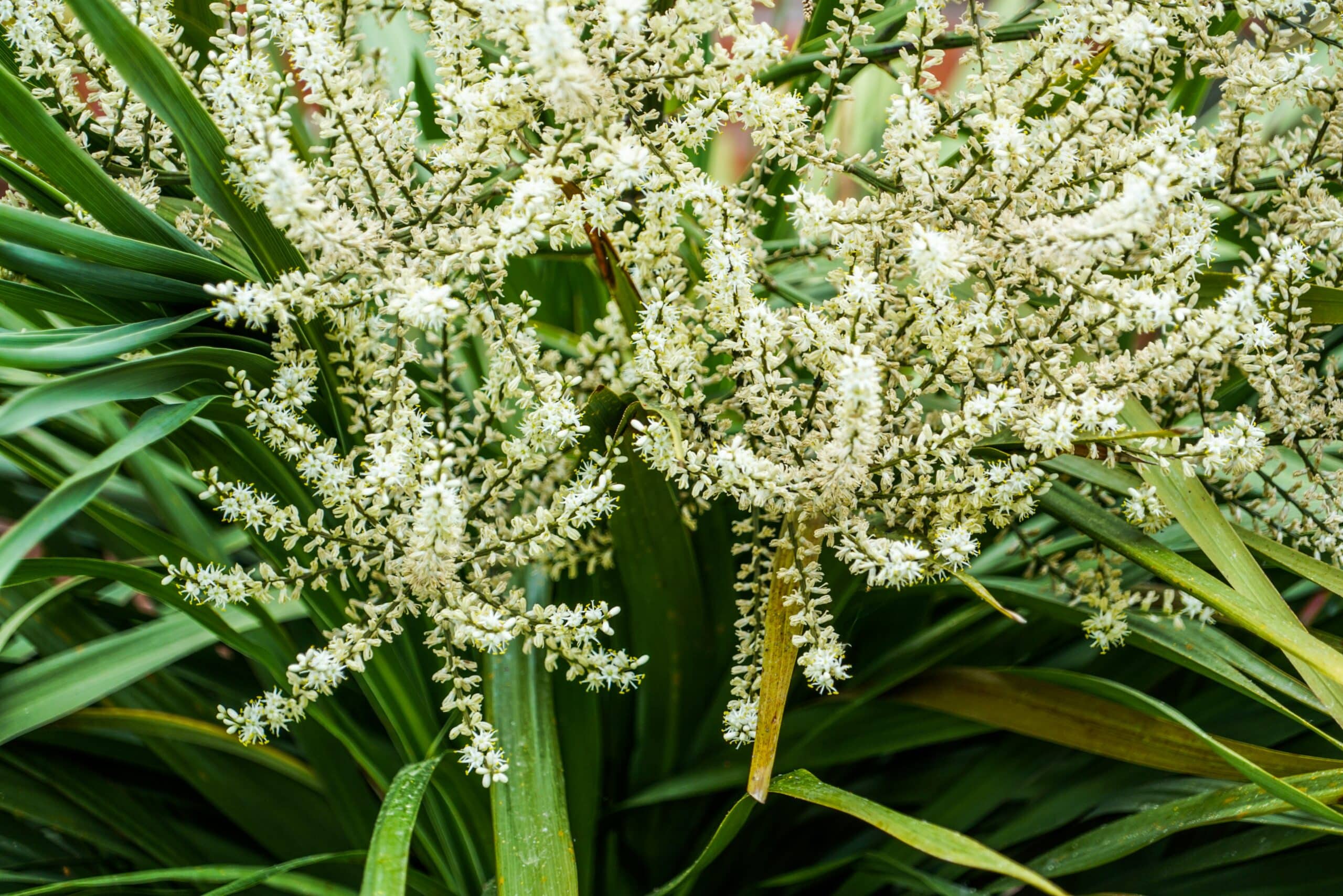Cordyline plants, also known as ‘Ti’, are a unique and beautiful addition to any indoor space. With their bright colors and lush foliage, they can create an eye-catching focal point for your home. In fact, according to the National Gardening Association, more than 20 million households in the United States have Cordyline plants growing indoors! But it takes some special care to ensure that these plants thrive in your home. This guide will provide you with all the information you need to successfully grow a Cordyline in your own indoor space.
The first step is understanding what type of environment this plant needs to thrive. Cordyline prefers indirect sunlight, warm temperatures, and high humidity levels. Additionally, it is important to water them regularly and use a well-draining potting mix when planting them indoors. If you provide your plants with the right conditions, they may even bloom beautiful flowers!
Finally, there are several other tips and tricks that can help you keep your Cordyline healthy and happy. This includes how often you should fertilize them and how to avoid common pests or diseases that could affect them. With all this information at hand, you’ll have everything you need to ensure that your Cordylines continue to thrive for years to come!
What Is A Cordyline (Ti)?
Cordyline (ti) plants are a popular choice for indoor gardening. These beautiful plants have an exotic look and require minimal care, making them perfect for novice gardeners and busy households. But what is a cordyline (ti)?
A cordyline (ti) is a tropical plant that originates from the Pacific Islands. It has long, slender leaves in shades of green, red, purple, yellow, or pink and grows up to 6 feet tall indoors. The flowers are small and fragrant in shades of white or pink. The foliage adds texture and color to any room it’s placed in.
Due to their low-maintenance requirements and vibrant color, cordylines (ti) make excellent houseplants. They require plenty of sunlight but only need occasional watering as they’re drought tolerant plants. Additionally, they are known to be quite hardy so you don’t have to worry about them withering away if you forget to water them every once in a while! With proper care and attention, your cordyline (ti) will flourish for many years to come.
Now that you know what a cordyline (ti) is, let’s explore the benefits of growing one!
What Are The Benefits Of Growing A Cordyline (Ti)?
Growing a cordyline (ti) has many advantages. From their vibrant colors and towering heights to their low maintenance requirements, they make a great addition to any home or outdoor garden. Here are the top four benefits of cultivating this plant:
Dramatic Appearance: Cordylines can reach up to 10 feet tall in ideal conditions. Their bright foliage comes in shades of red, pink, purple, green and yellow that add an amazing visual impact to any space.
Easy Care: These plants don’t require much upkeep; they only need basic care every now and then. They also thrive well in indirect light and slightly moist soil so you don’t have to worry about over-watering them either.
Air Purification: Cordylines help cleanse the air around them by absorbing toxins like formaldehyde and benzene from the atmosphere. This makes them perfect for those who want cleaner air indoors without having to invest in air purifying equipment or chemicals.
Versatility: Whether it’s indoors or outdoors, you can use cordylines as part of your landscape design or just as a standalone statement piece wherever you want it—in your bedroom, living room, patio, balcony, etc.
With these impressive qualities, it’s no wonder why more and more people are turning to cordylines for their home décor needs! With the right amount of light and water, you can have one of these beautiful plants in no time at all! To ensure that your cordyline thrives in its new home it’s important to pick the best place for planting – but where is that?
Where Is The Best Place To Plant A Cordyline (Ti)?
Planting a cordyline (ti) is like finding the perfect puzzle piece to complete your garden. With its unique foliage and cascading look, it can create an inviting focal point while adding a touch of exotic charm. But where is the best place to plant this captivating beauty?
First off, take into account where you live and the amount of light your yard gets. If you live in a warm climate with lots of sun, then a spot in full sun near the corner of your garden would be ideal for your cordyline (ti). But if you live in an area with cooler temperatures and less sunlight, then partial shade is more suitable.
When choosing a spot for your cordyline (ti), make sure to pick somewhere that isn’t too windy or prone to flooding. The soil should also be well-draining so as not to drown the roots of this tropical plant. Also, remember that once planted, cordylines are fairly resilient and can tolerate some neglect!
Once you’ve found the perfect spot for your cordyline (ti), it’s time to move onto what type of soil is best for this lush beauty…
What Type Of Soil Is Best For A Cordyline (Ti)?
When it comes to planting a cordyline (ti), selecting the right type of soil is key. After all, a plant’s success depends largely on having the right nutrient-rich environment. In order for your cordyline (ti) to thrive, you’ll need to make sure it’s planted in a well-draining soil that is slightly acidic.
When shopping for soil, look for one specifically designed for acid-loving plants. This will help ensure your cordyline (ti) gets the correct balance of nutrients and moisture it needs. You can also add organic matter such as peat moss or compost to your soil mix to improve drainage and promote healthy root growth. Additionally, adding fertilizer at least once per year can help boost your cordyline (ti)’s performance.
Once you’ve got the right type of soil in place, it’s important to remember that proper preparation is essential for success. Make sure you loosen up the soil by tilling or spading before planting your cordyline (ti). Doing so will help create an optimal environment where its roots can spread out easily and absorb nutrients more efficiently. Now that you have the best soil ready, let’s talk about how to prepare it for planting a cordyline (ti).
How To Prepare Soil For Planting A Cordyline (Ti)?
No gardening task is quite as daunting as preparing the soil for planting a cordyline (ti) – it is an arduous and complex task that requires such delicate attention to detail. But with the right guidance, it can be done with ease! Here are five of the critical steps that you must take when prepping the soil:
Start by breaking up any large clumps of soil and removing any debris like stones or twigs.
Add in organic matter like peat moss or compost to improve the overall quality of your soil.
Make sure to aerate your soil well so that oxygen can get down into its depths.
Amend alkaline soils with sulfur to reduce pH levels and make them more suitable for growing a cordyline (ti).
Lastly, water your soil until it’s damp but not soggy, so that moisture is evenly distributed throughout the area you’ll be planting in.
By following these simple steps, you’ll have prepared your soil perfectly for planting a cordyline (ti). With the hard work out of the way, you’ll be able to focus on making sure your new plant gets off to a strong start with plenty of sunshine and water! Now that we’ve got our soil prepped and ready, let’s move on to planting our beautiful cordyline (ti).
How To Plant A Cordyline (Ti)?
Planting a cordyline (ti) is like giving it a new home. It’s an exciting and important step that can make all the difference in how your plant blossoms in the coming months. So, let’s dive right into preparing for this special moment!
First, you’ll need to create a soil mix that will provide proper nutrition and aeration. Use a combination of potting soil, perlite, and compost to get the right balance of drainage and moisture retention. This will also help ensure that your cordyline (ti) has adequate nutrients to put down roots.
Next, it’s time to get planting! Choose a pot with adequate drainage holes at the bottom and fill it with the soil mix from earlier. Carefully take your plant out of its old container and place it in the center of its new home. Gently press down on the soil around the base of the plant to secure it in place. Water lightly and you’re done!
Now that your cordyline (ti) is planted, you’ll want to make sure you give it all the care it needs moving forward. This includes providing just enough water for healthy growth without overwatering or drying out your plant.
What Is The Best Way To Water A Cordyline (Ti)?
Nurturing and caring for a cordyline (ti) is like raising a child; it requires patience, dedication, and lots of love. As any proud parent knows, the key to success starts with providing the right nutrition. When it comes to watering a cordyline (ti), this is absolutely no exception. In order to ensure that your plant thrives, let’s take a closer look at how much water it needs and what the best way to provide it is.
Watering your cordyline (ti) properly is essential for its health and vitality. This tropical plant likes moist soil but can’t tolerate being overwatered. So, when you water your cordyline (ti), make sure that you do it just enough to keep the soil damp without saturating it. You should also avoid getting its leaves wet since they may become prone to fungal diseases if too much moisture accumulates on them.
It’s important to check the soil regularly so that you can determine when your cordyline (ti) needs more water. To do this, stick your finger into the soil up to the first knuckle; if it feels dry then you should give your plant a gentle drink of water. If your finger comes out wet or damp then hold off on watering until next time since overwatering can be detrimental to the health of your plant. TIP: Don’t forget that different seasons mean different levels of moisture in the air – during winter months, you’ll need to adjust accordingly and water less than what you’d usually do in summertime!
What Type Of Fertilizer Is Best For A Cordyline (Ti)?
Fertilizing your cordyline (ti) is an important part of keeping it healthy and happy. Proper fertilization helps provide essential nutrients to the plant, allowing it to grow strong and vibrant. To make sure you’re giving your cordyline (ti) the best care possible, here are five key tips for fertilizing your plant:
Know when to fertilize – Cordylines (ti) should be fertilized during their active growing season, which typically runs from spring through fall. During this time, apply fertilizer about once every two weeks.
Choose the right fertilizer – Look for a balanced liquid or granular fertilizer specifically formulated for indoor plants that contains nitrogen, phosphorus and potassium in equal parts.
Dilute the fertilizer – Be sure to dilute fertilizer so that it’s only half as strong as recommended on the label; otherwise it could potentially burn or damage your plant’s leaves.
Don’t fertilize in winter – Your cordyline (ti) will go dormant over winter and won’t need any additional fertilizer until its active growing period starts up again in springtime.
Water regularly – Regular watering helps ensure that your cordyline (ti) gets enough water while also helping the fertilizer soak into the soil more effectively.
By following these tips and using the right type of fertilizer at the right time, you can rest assured that your cordyline (ti) will stay healthy and strong throughout its growing period! Now that we’ve covered how to fertilize a cordyline (ti), let’s move on to discussing pruning techniques…
How To Prune A Cordyline (Ti)?
Pruning a cordyline (ti) is an important step in maintaining its health and appearance. Surprisingly, it’s not uncommon to see cordylines that are 15-20 feet tall – a testament to how well they can thrive with proper care. To keep yours looking its best, here’s what you need to know about pruning a cordyline.
The first step is to choose the right tools for the job. Pruners, loppers, and handsaws are all suitable options for pruning a cordyline. When selecting your tools, make sure they’re sharp and free of rust or other contaminants so you don’t damage the plant while trimming it. Additionally, wear gloves when handling the plant since its leaves are sharp enough to cut your skin.
Once you have the right tools for the job, it’s time to start pruning! To ensure healthy growth and reduce stress on the plant, it’s best practice to remove no more than 20% of the foliage at once. Start by removing any dead leaves or branches from the base of the plant and then work your way up towards the top. Make sure you make each cut just above a leaf node or branch so new growth will sprout from that point on the stem. You can also use this opportunity to shape your cordyline into whatever design you’d like!
With these tips in mind, you’ll be able to easily keep your cordyline looking great year-round. Now let’s move on to propagating this unique houseplant!
How To Propagate A Cordyline (Ti)?
Propagating a cordyline (ti) can be an exciting and rewarding endeavor. With the right knowledge and a little effort, you can easily grow more of these beautiful plants at home. So let’s take a look at how to propagate a cordyline (ti).
First, it’s important to understand that you can propagate a cordyline (ti) in two different ways: by softwood cuttings or by seed. Softwood cuttings are the most common and easiest way to propagate this plant, so we’ll focus on that here.
To begin propagating your cordyline (ti), here are three steps you should follow:
- Gather some softwood cuttings from your plant; make sure the stems are healthy and disease-free.
- Place the cuttings in moist potting soil and cover them with a plastic bag or glass jar to create a humid environment.
- Keep the soil moist but not too wet, and place the pot in bright indirect light. Once new roots have formed, your cuttings will be ready for transplanting.
With these steps, you’ll be well on your way to propagating your own cordyline (ti)! Now let’s move on to how best to overwinter this tropical beauty…
How To Overwinter A Cordyline (Ti)?
It’s estimated that over 7 million people in the US grow a cordyline (ti) indoors as an ornamental plant. If you’re one of them, you may want to know how to overwinter your cordyline (ti). While it’s possible for this tropical plant to survive cold weather, few owners do so successfully without taking specific steps.
The first step is to check the temperatures in your area and make sure they don’t dip below 50°F. If they do, it’s time to act. Start by pruning back dead leaves and stems and reducing the amount of water your cordyline (ti) receives; this should help it adjust better when winter arrives. Additionally, provide some extra protection by wrapping the pot with bubble wrap and moving it away from cold drafts and windows.
Providing protection against freezing temperatures is essential, but there are other things you can do to help your cordyline (ti) transition into winter safely. Repotting your plant into a larger container can give it more room for healthy root growth while also providing better insulation during colder months. Mulching around the base of the plant will also help insulate its roots from harsh winter temperatures.
By following these steps, you can give your beloved cordyline (ti) a fighting chance as winter approaches. Providing extra insulation, repotting into a larger container, and mulching around the base are all great ways to ensure that your cordyline (ti) makes it through the cold months safe and sound.
Common Pests And Diseases Affecting A Cordyline (Ti)?
It’s a horticultural horror story! Pests and diseases can wreak havoc on your beloved cordyline (ti), leaving it looking limp and lifeless. But fear not, with a few simple steps you can protect your plant from these common threats. Let’s dive into the details of the common pests and diseases affecting a cordyline (ti).
First off, watch out for aphids. These tiny insects suck away at the plant’s sap, causing stunted growth and yellowed leaves. Spider mites are another common problem that manifests itself as small webs between the leaves or around the stems. If left untreated, both of these pests can cause serious damage to your cordyline (ti).
Fungal problems like root rot or powdery mildew can also be troublesome for cordylines (ti). Root rot is particularly pernicious because it starts in the soil but quickly spreads to other parts of the plant if left unchecked. Powdery mildew, meanwhile, will appear as a greyish-white coating on leaves and stems. Both of these issues can be prevented by ensuring proper drainage in soil and avoiding overwatering or humid conditions.
With proper care and attention, you can keep your cordyline (ti) safe from these common threats. Taking preventive measures such as regularly checking for signs of infestation and providing good air circulation will go a long way in protecting your precious plants. To troubleshoot any potential problems with a cordyline (ti), read on!
How To Troubleshoot Common Problems With A Cordyline (Ti)?
Growing a cordyline (ti) is easy and rewarding, with only a few common problems to watch out for. In fact, did you know that over 50 species of this tropical plant have been identified in the wild? With proper care and attention, your cordyline (ti) can bring vibrant color and life to your home. Here’s how to troubleshoot common problems with a cordyline (ti).
One thing to keep an eye on is overwatering. If you give your plant too much water, it will become susceptible to root rot and other diseases. To avoid this, make sure the soil has had time to dry out before watering again. Additionally, you should check for signs of wilting or yellowing leaves as this could also be a sign of overwatering.
Another issue that can arise is pest infestations from insects like mealybugs or spider mites. To prevent this from happening, keep an eye out for webbing or white spots on leaves which are signs of pests. Trim off affected leaves right away and use insecticidal soap or neem oil if necessary. Regularly wiping down the leaves with a damp cloth can help deter pests as well.
Overall, these are just a few tips to help keep your cordyline (ti) healthy and thriving in its new home! With proper care and attention, you’ll be able to enjoy its beauty all year round!
Tips And Tricks For Growing A Healthy Cordyline (Ti)?
Growing a healthy cordyline (ti) is much easier than you think. With proper care and maintenance, you can ensure your plant remains in peak condition. Let’s take a look at some tips and tricks that will help you keep your cordyline thriving!
First of all, it’s important to provide your cordyline with the right amount of light. Place the plant near a window that gets plenty of bright, indirect sunlight every day. If it doesn’t get enough sun, its leaves may start to lose their color or become yellowed and wilted. Keep in mind that cordylines can also tolerate low light but won’t be as vibrant as they would be if they received more direct sunlight.
Another key factor for successful cordyline growth is regular watering. Water the soil when it starts to feel dry and make sure there aren’t any standing puddles of water afterwards. You can also mist the leaves occasionally to help increase humidity levels around the plant, but don’t do this too frequently since too much moisture can cause root rot. Additionally, make sure to fertilize your cordyline every three months with a diluted liquid fertilizer for best results.
Finally, pay attention to temperature levels as well; cordylines prefer temperatures between 65-85°F (18-30°C). A sudden drop or spike in temperature could cause shock in the plant and lead to leaf drop or stunted growth. So now that you know how to properly care for your cordyline (ti), let’s move on to how to repot one…
How To Repot A Cordyline (Ti)?
Repotting a cordyline (ti) is an important part of keeping it healthy. This tropical plant requires plenty of room to grow, and repotting is the best way to give it that space. By following a few simple steps, you can ensure that your cordyline gets all the nutrients it needs and continues to thrive.
First, prepare the new pot for your cordyline. The pot should be slightly larger than the previous one and filled with fresh potting soil that’s specifically designed for tropical plants. Make sure there are enough drainage holes in the bottom of the pot so excess water can escape.
Next, carefully remove your cordyline from its current pot. Gently shake off any excess soil and inspect the roots for signs of damage or disease. If necessary, trim away any damaged or dead roots before placing your plant into its new home. Fill in around the root ball with additional soil until you reach about an inch below the rim of the pot. Finally, water your cordyline thoroughly to help settle the soil and restore moisture levels.
By taking these steps when repotting your cordyline (ti), you’ll provide it with ample space to grow while also giving it a nutrient-rich environment needed to stay healthy and vibrant. With a little bit of care and attention, your cordyline will be ready to thrive in its new home!
Frequently Asked Questions
How Often Should I Water A Cordyline (Ti)?
Taking care of your cordyline (ti) is important for keeping it healthy and vibrant. Watering is one of the key elements to look out for when caring for this plants. So, how often should you water your cordyline?
Generally speaking, you want to water your cordyline regularly but not too often. You should aim to water it every 7-14 days and make sure that the soil remains moist throughout. Keep an eye on the color of the leaves as they can be a good indicator of whether or not your plant needs watering. If the leaves start to turn yellow, it’s likely time to give it a drink!
It’s also important to be mindful of the temperature in your home or office before deciding how often you need to water your cordyline. During warmer months, you may need to water more frequently than during cooler months. If you notice that the soil is getting dry too quickly, then increase the frequency of watering accordingly. With proper care and attention, your cordyline can be a real statement piece in any living space!
Can I Grow A Cordyline (Ti) Outdoors In Cold Climates?
The question of whether a cordyline (ti) can survive outdoors in cold climates is one that has been puzzling gardeners for some time. It’s a tricky prospect, as the plant requires warmth and moisture to survive – yet many gardens have to contend with extreme temperatures and dry air. Fortunately, by taking certain precautions, it’s possible to successfully grow this lush tropical beauty even in the chilliest of locations.
With a little extra care and planning, you can make sure your cordyline (ti) thrives in any climate. Start by providing enough sunlight – the more direct sunlight it gets, the better. Also, ensure proper soil drainage; too much water can be detrimental to its health. If you’re in an area with cold winters, you’ll need to move your plant indoors during these months or provide it with insulation such as mulch or straw bales to keep its roots warm.
By taking all these steps into account, you can create an environment in which your cordyline (ti) will thrive despite the cold weather. With its beautiful foliage and graceful form, this captivating tropical plant will add flair and drama to any outdoor space – no matter what the climate!
How Much Light Does A Cordyline (Ti) Need?
Cordylines are an attractive and easy-to-care-for plant that can add a tropical feel to your home or garden. But how much light does this popular houseplant need in order to thrive? Let’s explore the sunlight requirements of cordylines and how you can provide the right amount of light for them.
Cordylines require bright, indirect light in order to stay healthy and vibrant. This means they should be placed near a window where they will get plenty of sun without being exposed to direct sunlight. If you live in a colder climate, you may want to consider keeping your cordyline indoors during the winter months, as cold temperatures can cause damage to the plant.
When it comes to caring for your cordyline, it is important to remember that too much sun can be just as damaging as not enough. Be sure to pay attention to how much light your plant is getting in order to ensure its health and well-being. You may also want to rotate your plant occasionally so that all sides of it receive equal amounts of light. With proper care and attention, your cordyline will have no problem thriving!
Can I Propagate A Cordyline (Ti) From Stem Cuttings?
What is the best way to propagate a Cordyline (Ti) plant? Well, if you’re anything like me, you’ve been relentlessly searching for an answer and have come up empty-handed. But fear not, because I’m here to tell you that propagating a cordyline from stem cuttings is totally doable. You don’t need any fancy equipment or expensive materials – all you need is some patience and love!
Satirically speaking, propagating a cordyline from stem cuttings has certainly become the cutting-edge trend among modern gardeners. It’s the perfect way to show off your green thumb and give yourself something to brag about at your next dinner party. After all, who doesn’t want to be seen as the master of their own lush indoor jungle?
But let’s get down to the nitty gritty of it – what should you actually do? First things first: Collect your stem cuttings! These should be no longer than 8 inches in length and preferably taken from mature growths on the parent plant. Cut just above a leaf node using a clean pair of pruners or scissors. Place them into a warm container of water and wait patiently while they root. Once they’ve rooted sufficiently, transfer them into individual pots filled with soil mix specifically designed for growing cordylines. Finally, make sure to provide them with plenty of light – though not too much direct sun – and keep them moist but not soggy by regularly misting their leaves.
So there you have it – easy peasy propagation instructions for your beloved cordyline plants! Now go forth and spread some greenery throughout your home!
Does A Cordyline (Ti) Need To Be Fertilized?
In a world where it’s easy to get lost in the complexities of plant care, many gardeners wonder if the exotic-looking cordyline (ti) needs fertilization. The answer is a resounding yes, this tropical beauty requires regular fertilizing to stay healthy and perform its best.
As with most plants, anachronistically speaking, feeding your cordyline (ti) will help it grow strong and beautiful. Fertilize your plant every two weeks during its growing season with a balanced fertilizer like 10-10-10. For an even richer look and more vibrant color, use a magnesium sulfate or iron sulfate supplement for foliage plants alongside your regular fertilizer.
It’s also important to note that cordyline (ti) need plenty of light and humidity to thrive, so be sure to keep them in well-lit areas and mist their leaves often. To keep your plant looking fresh and healthy year-round, follow these simple steps: water regularly, fertilize every two weeks during the growing season, provide plenty of bright light and humidity, and give your cordyline (ti) occasional pruning as needed. With just a bit of extra care and attention, you can enjoy all the beauty this unique plant has to offer!
Conclusion
Cordyline (Ti) plants bring a unique beauty and energy to any home or garden. With a little love and attention, these hardy plants can thrive for many years. Watering your Cordyline (Ti) on a regular basis, making sure it gets enough sunlight, fertilizing periodically, and propagating from stem cuttings are all important steps in caring for your plant.
While taking care of a Cordyline (Ti) may seem like a lot of work, the reward is worth it. Not only will you get to enjoy this striking plant in your home or garden, but you will also be able to watch it grow and flourish over time. It’s almost as if the plant is telling us that with enough patience and dedication anything is possible.
The Cordyline (Ti) is an example of how even something so small can have such a large impact on our lives. If we take the time to take care of our plants, both literal and figurative, we will be rewarded with growth and beauty that will last far beyond our lifetime.





























